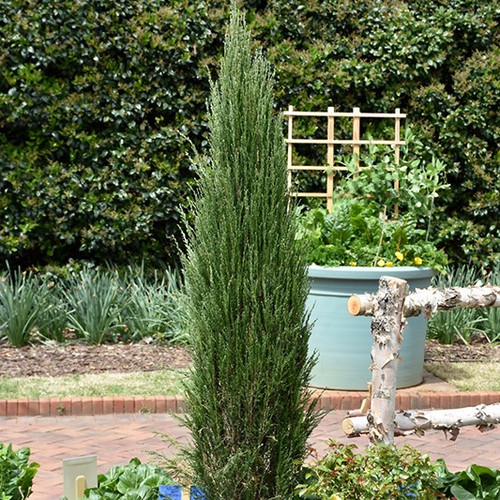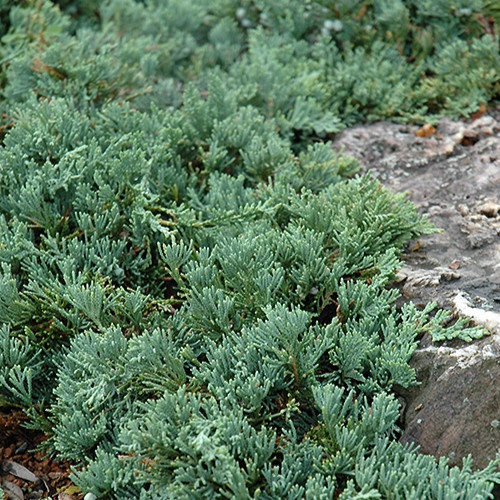| Juniperus horizontalis 'Blue Chip' |
USDA Zone: 3-9 |
Blue Chip Juniper is a dwarf conifer which is primarily valued in the garden for its broadly spreading habit of growth. It has attractive blue evergreen foliage. The scale-like sprays of foliage are highly ornamental and turn purple in the fall, which persists throughout the winter.
A top quality groundcover evergreen for cold climate landscapes, featuring steel blue foliage taking on a hint of purple in winter, attractively arching ground-hugging habit, wide spreading; extremely adaptable and hardy; excellent color accent.
Blue Chip Juniper is recommended for the following landscape applications;
- Mass Planting
- General Garden Use
- Groundcover
Plant on slopes or along retaining walls for erosion control.
Companion Plants: Rose, Clematis, Russian Sage, Catmint, Barberry, Maiden Grass
Deer Resistant
Spreading Juniper
|
Key Feature
|
Light Needs | Landscape Uses |
 |
 |
|
|
|
|
| More About Blue Chip Juniper |
| Height: 1 ft |
Spread: 5-7 ft |
|
Blue Chip Juniper does best in full sun to partial shade. It is very adaptable to both dry and moist growing conditions, but will not tolerate any standing water. It is considered to be drought-tolerant, and thus makes an ideal choice for a low-water garden or xeriscape application. It is not particular as to soil type or pH. It is highly tolerant of urban pollution and will even thrive in inner city environments. Grows easily in average, well-drained soil, but adapts to a wide range of conditions. Water deeply, regularly during first growing season to establish an extensive root system. Once established, reduce frequency; tolerates moderate drought in cooler regions. Space 5 ft. apart, as groundcover; control weeds with mulch until plants fill in. Note that when grown in a container, it may not perform exactly as indicated on the tag - this is to be expected. Also note that when growing plants in outdoor containers and baskets, they may require more frequent waterings than they would in the yard or garden. Be aware that in our climate, most plants cannot be expected to survive the winter if left in containers outdoors, and this plant is no exception. NOTE: Some flowers and plants may be harmful or poisonous to people or pets if touched or ingested. If you require more information before placing an order, please let us know in advance. |












